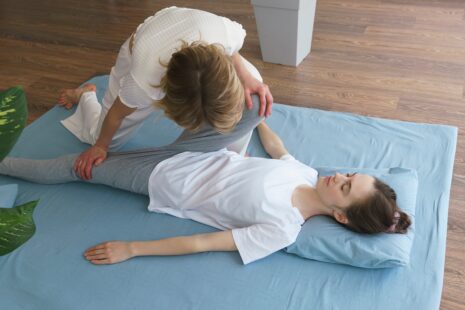Recovery from ACL (anterior cruciate ligament) surgery involves a structured rehabilitation program that typically includes a variety of exercises aimed at restoring strength, mobility, stability, and function in the knee joint.
Here are some exercises commonly included in ACL rehabilitation programs…
- Range of Motion Exercises
- Heel slides – Lie on your back, bend your knee, and slide your heel towards your buttocks, then straighten your leg.
- Quadriceps sets – Sit or lie down with your leg extended, tighten your thigh muscles, and hold for a few seconds.
- Hamstring stretches – Lie on your back with one leg bent and the other extended. Gently pull the extended leg towards you using a towel or strap.
- Strengthening Exercises
- Quadriceps strengthening – Leg presses, straight leg raises, and terminal knee extensions can help strengthen the quadriceps muscles.
- Hamstring strengthening – Hamstring curls using resistance bands or machines can target the hamstring muscles.
- Calf raises – Stand with your feet hip-width apart and rise onto your toes, then lower back down slowly.
- Balance and Proprioception Exercises
- Single-leg balance – Stand on one leg while maintaining balance, and progress to performing on unstable surfaces like a balance board or foam pad.
- Proprioception exercises – Various drills such as wobble board exercises, ball tosses, or agility ladder drills can help improve proprioception and coordination.
- Functional Exercises
- Mini squats – Perform partial squats with proper form, gradually increasing depth as tolerated.
- Step-ups – Step onto a low platform with one leg, then lower back down.
- Lunges – Forward, backward, and lateral lunges can help improve lower body strength and stability.
- Cardiovascular Exercises
- Low-impact activities like stationary biking, swimming, or using an elliptical machine can help improve cardiovascular fitness without placing excessive stress on the knee joint.
- Flexibility Exercises
- Incorporate stretching exercises for the quadriceps, hamstrings, calves, and hip flexors to maintain or improve flexibility in the lower body.
It’s important to perform these exercises under the guidance of a physical therapist or healthcare professional who can tailor the program to your specific needs and stage of recovery. Progression should be gradual, and exercises should be performed with proper form to minimize the risk of re-injury.Always consult with your healthcare provider before starting any new exercise program, especially during ACL recovery.




